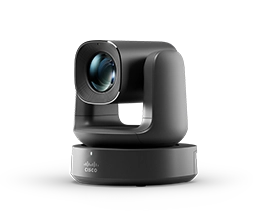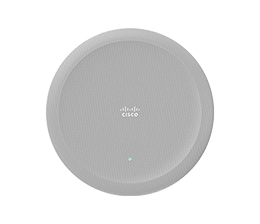CCaaS (Contact Center as a Service) is a cloud-based solution that provides contact center functionalities over the Internet. This allows businesses to manage customer interactions without the need for on-premise hardware and software. This model offers scalability, flexibility, and access to advanced technologies.
Understanding CCaaS meaning is crucial for businesses aiming to elevate their customer service capabilities. CCaaS offers a wide array of benefits that can revolutionize how companies engage with their customers.
In this article, we will delve into the key features of CCaaS solutions, explore the benefits they bring to businesses, and discuss future trends in this domain. Additionally, we will cover the process of transitioning from traditional call centers to CCaaS and draw comparisons between the two approaches.
Understanding CCaaS
Contact Center as a Service (CCaaS) is a cloud-based solution that enables businesses to manage customer interactions effectively. It integrates multiple communication channels—including phone calls, emails, chats, and social media—into a single unified system.
So, how does CCaaS work? Instead of investing in on-premises infrastructure and software, companies access contact center functionalities via the Internet. This cloud-based approach allows businesses to streamline their customer service operations and enhance customer experiences.
CCaaS comprises several key components that work together to deliver its benefits:
- Multi-channel communication: CCaaS solutions support various communication channels, enabling customers to connect through their preferred medium, whether it's phone, email, chat, or social media.
- Automatic Call Distribution (ACD): ACD intelligently routes incoming calls to the most appropriate agent based on predefined criteria such as skills or availability.
- Interactive Voice Response (IVR): IVR systems greet callers with pre-recorded messages and automated menus, offering self-service options and routing calls to the right department or agent.
- Real-time analytics: CCaaS platforms offer real-time insights into contact center performance, including metrics like call volume, wait times, agent availability, and customer satisfaction.
By leveraging CCaaS, businesses gain increased flexibility, scalability, and cost savings. They can scale their operations up or down as needed and only pay for the resources they use.
Benefits of CCaaS
CCaaS offers numerous advantages that can significantly enhance your business operations. Let's explore some key benefits:
Improved Scalability and Flexibility: With CCaaS, your contact center can easily adapt to changing business needs. Whether you experience seasonal fluctuations or sudden growth, CCaaS allows you to scale your operations up or down effortlessly. This flexibility ensures you can efficiently meet customer demands without extensive infrastructure investments.
Reduced Costs and Infrastructure Requirements: Utilizing CCaaS can substantially lower your operational costs. A cloud-based contact center solution eliminates the need for expensive hardware, software, and maintenance. Furthermore, you pay only for the services you use, making scalability cost-effective. This efficient resource allocation can improve your bottom line.
Enhanced Customer Experience: CCaaS empowers you to deliver exceptional customer experiences. Advanced features like intelligent call routing, real-time analytics, and omnichannel support enable personalized and efficient interactions. Seamless integration of various communication channels ensures customers can reach you through their preferred method, resulting in higher satisfaction and increased loyalty.
With these benefits, CCaaS solutions enable your business to streamline operations, reduce costs, and deliver outstanding customer service. Take advantage of CCaaS meaning by exploring the solutions offered by Webex to transform your contact center into a competitive advantage.
Features of CCaaS Solutions
CCaaS solutions offer a range of features that enhance communication and streamline business processes. Let's explore some key features:
Omnichannel Communication Capabilities: CCaaS solutions enable businesses to communicate with customers seamlessly across multiple channels, such as voice, email, chat, and social media. This ensures customers can reach out through their preferred channel, enhancing satisfaction and engagement.
Real-time Analytics and Reporting: CCaaS solutions provide real-time insights into customer interactions, allowing businesses to monitor call volumes, response times, and agent performance. These analytics help identify trends, optimize resource allocation, and improve overall customer service.
Integration with CRM Systems: CCaaS solutions can integrate with Customer Relationship Management (CRM) systems, enabling agents to access customer information, purchase history, and previous interactions. This integration enhances agent efficiency, allowing for personalized and contextually relevant support to customers.
By leveraging these features, businesses can deliver exceptional customer experiences and improve operational efficiency. At Webex, our CCaaS platforms are designed to empower businesses with these capabilities, ensuring seamless communication and enhanced customer satisfaction.
Transitioning to CCaaS
Transitioning to CCaaS (Contact Center as a Service) is a strategic move that can greatly enhance the efficiency and effectiveness of your customer service operations. This section will guide you through the key considerations and steps involved in this transition process.
Planning and Preparation: Before diving into the transition, it is essential to have a well-defined plan. Start by assessing your current contact center infrastructure and identifying areas for improvement. Determine your specific requirements and objectives for transitioning to CCaaS. This will help you evaluate potential providers and select the right one for your business.
Choosing the Right CCaaS Provider: With numerous CCaaS providers in the market, choosing the right one can be overwhelming. Look for a provider that offers a comprehensive suite of features, scalability, reliability, and excellent customer support. Consider their track record, reputation, and expertise in your industry. Evaluating demos and customer reviews can also provide valuable insights.
Migration Process and Timeline: Once you have selected a CCaaS provider, the migration process begins. It involves transferring your existing contact center infrastructure to the cloud-based CCaaS solution. This process may vary depending on the complexity of your current setup. Collaborate closely with your provider to ensure a smooth transition. Set a realistic timeline and communicate the changes to your team to minimize disruption.
By transitioning to CCaaS, you can unlock numerous benefits such as increased flexibility, scalability, cost savings, and improved customer experience. With the right planning, provider, and migration process, you can seamlessly embrace the future of contact center operations.
CCaaS vs. Traditional Call Centers
When it comes to contact center solutions, businesses have traditionally relied on setting up and maintaining their own call centers. However, with the advent of CCaaS (Contact Center as a Service), a new and more flexible approach has emerged. Let's explore the key differences between CCaaS and traditional call centers.
One of the main differences lies in the setup and maintenance. Traditional call centers require significant upfront investments in infrastructure, hardware, and software licenses. This not only involves substantial costs but also demands ongoing efforts to ensure smooth operations. On the other hand, CCaaS eliminates the need for such investments and maintenance responsibilities. With CCaaS, businesses can leverage a cloud-based solution that is managed by the service provider, allowing them to focus on their core operations.
Scalability and agility are crucial factors for businesses to adapt to changing customer demands. Traditional call centers often struggle with scalability due to the limitations of physical infrastructure. Scaling up or down requires significant time, resources, and disruptions to operations. In contrast, CCaaS offers unparalleled scalability and agility. The cloud-based nature of CCaaS enables businesses to easily adjust their contact center capacity based on their current needs. This ensures optimal resource allocation and allows for seamless expansion or contraction as the business evolves.
Another critical aspect to consider is the impact on customer satisfaction. Traditional call centers often face challenges in delivering consistent and personalized customer experiences. Limited integration with other customer service channels and legacy systems can hinder the smooth flow of interactions. CCaaS, on the other hand, provides advanced features like omnichannel support, intelligent routing, and real-time analytics. These capabilities empower businesses to deliver exceptional customer experiences, resulting in higher satisfaction levels and improved customer loyalty.
Future Trends in CCaaS
As the world of customer contact centers continues to evolve, it's important to stay ahead of the curve and understand the future trends in CCaaS (Contact Center as a Service). These trends not only shape how businesses interact with their customers but also pave the way for improved customer experiences and increased efficiency. Let's explore some key trends expected to shape the future of CCaaS.
1. Artificial Intelligence and Automation: With advancements in AI technology, CCaaS providers are incorporating artificial intelligence and automation into their platforms. AI-powered chatbots and virtual assistants can handle routine customer queries, freeing up human agents to focus on more complex issues. Automation streamlines processes, reduces wait times, and enhances overall customer satisfaction.
2. Personalization and Customization: In an era where customers value personalized experiences, CCaaS platforms are becoming more focused on tailoring interactions to individual preferences. By leveraging customer data and analytics, businesses can offer personalized recommendations, targeted promotions, and customized support. This level of personalization enhances customer loyalty and drives business growth.
3. Integration with Emerging Technologies: CCaaS providers are embracing emerging technologies to enhance their offerings. Integration with technologies like the Internet of Things (IoT), augmented reality (AR), and virtual reality (VR) opens up new possibilities for customer engagement. For example, IoT devices can proactively alert customer service agents about potential issues, enabling them to provide proactive support.
By staying up to date with these future trends in CCaaS, businesses can unlock new opportunities to deliver exceptional customer experiences. At Webex, we are committed to incorporating these trends into our CCaaS solutions, ensuring our customers stay ahead in the ever-changing landscape of customer contact centers.







